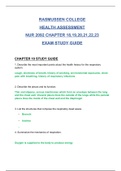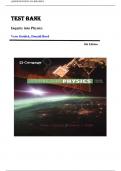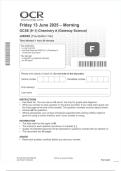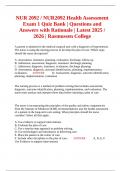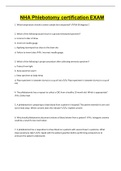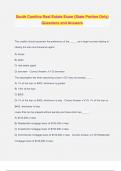NUR 2092 HEALTH ASSESSMENT STUDY GUIDE
RASMUSSEN COLLEGE HEALTH ASSESSMENT NUR 2092 CHAPTER 18,19,20,21,22,23 EXAM STUDY GUIDE CHAPTER 18 STUDY GUIDE 1. Describe the most important points about the health history for the respiratory system. cough, shortness of breath, history of smoking, environmental exposures, chest pain with breathing, history of respiratory infections 2. Describe the pleura and its function. Thin and slippery, serous membranes which form an envelope between the lung and the chest wall. Visceral pleura lines the outside of the lungs while the parietal pleura lines the inside of the chest wall and the diaphragm 3. List the structures that compose the respiratory dead space. - Bronchi - trachea - 4. Summarize the mechanics of respiration. Oxygen is supplied to the body to produce energy Carbon dioxide is removed as a waste product through energy reactions Homeostasis maintenance Maintenance of blood pH Maintenance of heat exchange 5. List the elements included in the inspection of the respiratory system - The shape and configuration of the thoracic cage. - The thorax should have a downward slope at 45°; thorax should be symmetrical, scapulae should be symmetrically placed in each hemithorax. - The anteroposterior diameter in relation to the transverse diameter should be a 1:2 ratio. - Muscles in neck and trapezius muscle should be checked for development. - Position patient is in during respiration should be noted-is patient relaxed, arms at sides, or tripod position. - Note the facial expression, level of consciousness, respiration rate. - Assess skin color and skin condition 6. Discuss the significance of a barrel chest. Anteroposterior diameter is equal to the transverse diameter; ribs are horizontal rather than in typical downward slope. Can be associated with COPD, asthma, chronic inflammation of the lungs 7. List and describe common thoracic deformities. - Pectus Excavatum “Funnel Breast”-sunken sternum beginning at 2nd intercostal space mostly at the xiphoid process
Written for
Document information
- Uploaded on
- October 25, 2020
- Number of pages
- 45
- Written in
- 2020/2021
- Type
- Exam (elaborations)
- Contains
- Questions & answers
Subjects
-
nur 2092 health assessment study guide
-
nur2092 health assessment study guide
-
nur2092 health assessment study guide
-
nur 2092 health assessment study guide
Also available in package deal
